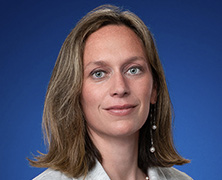What can be done to increase diversity in STEM fields?
I believe the key to increasing diversity in STEM fields is to strive for a diverse representation at all levels and in all areas and ensure recognition and visibility of this diversity. This spotlight on diversity will result in people being able to identify role models at different stages of their career and find those that match their career aspirations. It is also important for established STEM professionals from all walks of life to serve as mentors for the current and next generation of STEM professionals, to ensure we bring everyone up. Last, I think it’s important that we continue to improve a culture of flexible schedules, whether it’s working from home, working outside of traditional working hours, etc., particularly to allow working parents to meet the needs of their family as well as their work expectations.
What barriers do you see to closing the gender gap in STEM?
At a high level, I see two main barriers to closing the gender gap in STEM. First, a perception still exists, among many, that science is hard and that men are better suited to work in STEM fields. I see this particularly in math, physics, and engineering. This perception creates an additional psychological barrier for women to pursue a career in the STEM fields. More importantly though, I think it feeds into the imposter syndrome, which is the second barrier I see, as a lack of confidence can lead women to drop out of the field or result in slower career progression. Women are more prone to suffering from this syndrome because they may feel like they don’t belong because “their STEM field is better suited for men” or because they are not surrounded by peers of the same gender.
Where do you see women in STEM in five years?
Large strides have already been made at increasing female participation in STEM, and I am hopeful that over the next five years, this growth will continue towards equal participation in all STEM fields and at all levels. With this continued growth will come an increased number of female mentors and sponsors, which will then further improve the visibility and perception of women in science.
Eventually, though probably not in five years from now, I hope that as a society we can get to a place where this question does not need to be asked anymore, where diversity is a given and everyone is recognized as an individual. I would want the question and dialogue to focus on how we, as a diverse scientific workforce, further advance science.







